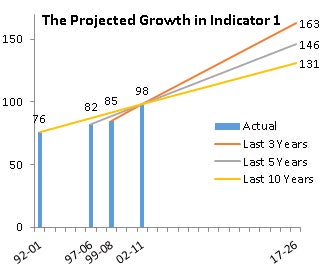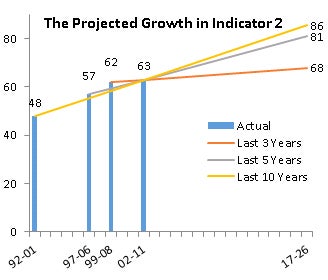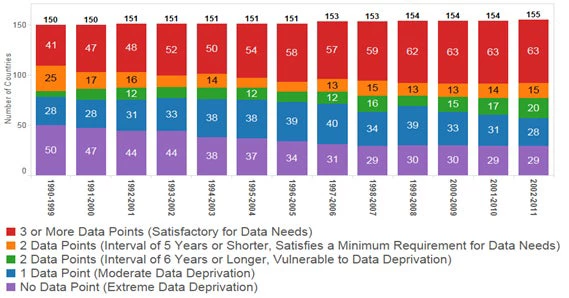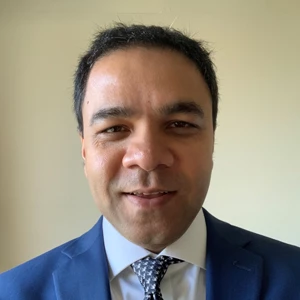The availability of poverty data has increased over the last 20 years but large gaps remain
About half the countries we studied in our recent paper, Data Deprivation, Another Deprivation to End are deprived of adequate data on poverty. This is a huge problem because the poor, who often lack political representation and agency, will remain invisible unless objective and properly sampled surveys reveal where they are, and how they’re faring. The lack of data on human and social development should be seen as a form of deprivation, and along with poverty, data deprivation should be eradicated.
Countries should measure poverty regularly, and have 2 or more poverty data points for every ten year period by 2030 – the target year for ending extreme poverty.
There is a growing chorus against data deprivation. Mo Ibrahim bemoans the ‘extreme poverty of data’ while Lawrence Chandy and Homi Kharas are underwhelmed and frustrated by the frequency of the global poverty estimates produced by the World Bank. Aleem Walji notes that recent poverty estimates are available for only half of the 155 countries the World Bank monitors poverty in, and a recent blog by one of us touches on this.
Finally, the recent United Nations IEAG Report “A World That Counts” argues that a lack of data can lead to a “denial of basic rights.”
Analyzing poverty data points using the World Development Indicators
We analyzed the availability of poverty data using the World Development Indicators (WDI) database, and have introduced a metric to measure the magnitude of “Data Deprivation.” The WDI database identifies 1,101 different poverty data points based on household consumption surveys across developing countries between 1976 and 2013, for which poverty measures were computed at national or international poverty lines. While more data is becoming available over time, the extent of data deprivation is considerable.
To grasp whether poverty in a country is rising or declining, at least two data points within a ‘reasonable’ time interval are required. Inspired by the IMF's General Data Dissemination System (GDDS) that calls for poverty updates every 3 to 5 years, we measure the availability and frequency of poverty data across countries in 10-year intervals. In order to meet the recommendation by the GDDS, there must be at least 2 poverty estimates in a 10-year time period.
77 out of 155 countries measured do not have adequate poverty data
The good news is that this metric of data availability points to clear improvements over time. As Figure 1 shows, the total number of countries with zero poverty data points declined from 50 during 1990-99 to 29 during 2002-11. A total of 63 out of the 155 countries surveyed have satisfactory data availability with 3 or more data points during 2002- 2011, up from 41 during 1990-1999.
Figure 1: Availability of Poverty Data in Ten Year Periods
The challenges, however, are quite clear. A total of 57 countries from the study have either zero or 1 poverty data point between 2002 and 2011. While 35 countries have 2 data points, 20 of them experienced a stretch of more than 5 years without poverty data between 2002 and 2011. In summary, about half of the countries surveyed – 77 of 155 – are deprived of adequate data, 57 of them quite acutely. Using the terms proposed in our paper: 20 countries are vulnerable to data deprivation, while another 57 have either moderate (28) or extreme data deprivation (29).
A lack of survey data precludes country-level poverty monitoring efforts and also impedes global monitoring by reducing the precision of global estimates and relying on projections.
So how do we set targets to end data deprivation?
A proposal on indicators and targets for ending data deprivation
Based on the two principles of minimum requirements for data needs and satisfactory levels of data needs for poverty, we suggest two indicators of data availability:
- Indicator 1: The number of countries with two or more data points in the last ten years; and
- Indicator 2: The number of countries with three or more data points in the last ten years.
Projecting the recent trends of the two indicators into 2030 (Figure 2), we propose the following targets:
- Target 1: End “Data Deprivation” by 2030. All countries will have two or more poverty data points in the last ten years by 2030.
- Target 2: 86 countries will have three or more poverty data points in ten years by 2030.
Figure 2: The pace of growth in Indicator 1 and 2


The implication of Target 1 is that the goal of ending extreme poverty by 2030 must be accompanied by the end of data deprivation. These targets are ambitious but possible. The proposed targets also align with the call for a ‘ data revolution’ – exploiting advances in knowledge and technology, utilizing resources for capacity development, and improving coordination of efforts among key actors to mobilize sustainable development (IEAG 2014).






Join the Conversation